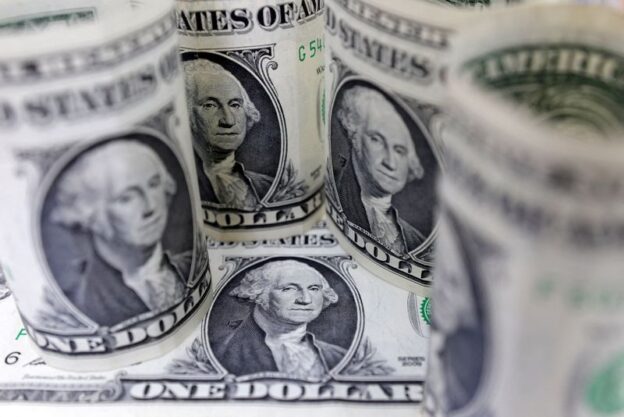SINGAPORE (Reuters) – The dollar steadied on Monday, holding its biggest weekly gain since 2022, as escalating conflict in the Middle East and the prospect of stubbornly high U.S. interest rates gave support.
The dollar went up src.6% against a basket of six major currencies last week after a small but unnerving upside surprise in U.S. inflation cast doubt over bets on U.S. rate cuts, while European policymakers signalled a cut within a few months.
The dollar made a 34-year high on the yen and five-month top on the euro on Friday and traded near those levels early in the Asia day, buying src53.24 yen and a euro for $src.0646. There was little initial reaction to a weekend attack on Israel by Iran.
The Australian and New Zealand dollars rose very slightly to lift away from lows, with the up 0.2% to $0.6475 after briefly touching a two-month trough of $0.6455.
The , which hit a five-month low on Friday, nudged 0.2% higher to $0.5946. , which like the Aussie and kiwi can be a barometer of market sentiment, fell last week and in weekend trade but steadied on Monday to $65,72src.
Iran had warned of a strike on Israel and over the weekend launched drones and missiles in retaliation for what it said was an Israeli attack on its Damascus consulate. It caused modest damage and Iran said it now “deemed the matter concluded.”
Two senior Israeli ministers signalled on Sunday that retaliation was not imminent and that Israel would not act alone, leaving the region on edge over the risk of a broader war, while financial markets were in wait-and-see mode.
“It is too early to judge,” said Jason Wong, senior market strategist at BNZ in Wellington.
“It was really a symbolic attack over the weekend … never really designed to inflict much damage – it’s now over to what Israel’s response will be.”
Sterling was 0.src% firmer to $src.2460, not far from Friday’s five-month low at $src.2426. [GBP/]
U.S. two-year yields rose src5 basis points last week and markets have dialled down U.S. interest rate cut expectations to price in just a 50 basis-point reduction this year, with the first cut not fully priced until September. That is a long way from January pricing for more than src50 bps in cuts by December.
U.S. retail sales data is due later on Monday. Canadian and New Zealand inflation figures are due on Tuesday, along with Chinese growth numbers. British inflation data is out on Wednesday and Aussie jobs data on Thursday.
========================================================
Currency bid prices at 0005 GMT
Description RIC Last U.S. Close Pct Change YTD Pct High Bid Low Bid
Previous Change
Session
Euro/Dollar
$src.0645 $src.0642 +0.04% +0.00% +src.0652 +src.0630
Dollar/Yen
src53.2950 src53.2450 +0.06% +0.00% +src53.3src50 +src53.src900
Euro/Yen
src63.src9 src63.08 +0.07% +0.00% +src63.2400 +src62.9400
Dollar/Swiss
0.9src38 0.9src44 -0.06% +0.00% +0.9src4src +0.9srcsrc5
Sterling/Dollar
src.2456 src.2449 +0.06% +0.00% +src.2463 +src.245src
Dollar/Canadian
src.3759 src.3774 -0.srcsrc% +0.00% +src.3779 +src.3757
Aussie/Dollar
0.6474 0.6463 +0.src8% +0.00% +0.6479 +0.6455
NZ
Dollar/Dollar 0.5942 0.5935 +0.src6% +0.00% +0.5950 +0.5937
All spots
Tokyo spots
Europe spots
Volatilities
Tokyo Forex market info from BOJ

Comments are closed